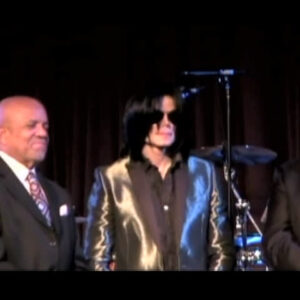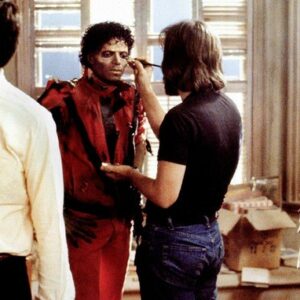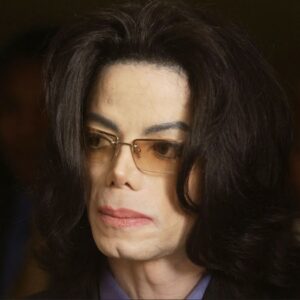Few shows in the modern TV landscape have left as lasting an impression as Peaky Blinders. First aired in 2013, the series quickly became more than just a gritty crime drama—it morphed into a cultural touchstone. Set in the post-World War I era of Birmingham, England, the show chronicles the rise of the Shelby family and their gang, the Peaky Blinders. With its striking cinematography, sharp dialogue, and unforgettable style, Peaky Blinders captured the imaginations of audiences worldwide. The allure of the show extends beyond its riveting narrative; it resonates with viewers for its impeccable craftsmanship in costume and set design, its musical anachronisms, and the unshakable presence of its lead, Cillian Murphy.
What sets Peaky Blinders apart is its ability to blend historical fiction with modern sensibilities. The show is a melting pot of contradictions—brutal yet poetic, grounded in historical context yet otherworldly in its aesthetic. From the sharp-suited Shelbys strutting through industrial Birmingham to the pounding soundtrack of rock and roll that swells through each scene, Peaky Blinders has cultivated an identity as cool as it is captivating.
At the heart of the show’s appeal is one man: Thomas Shelby, a war-torn, brooding mastermind whose complexities breathe life into every episode. And who better to embody such a character than Cillian Murphy? His portrayal of Tommy Shelby isn’t just acting; it’s an exploration of darkness, charisma, and depth that has left a profound impact on viewers and critics alike.
Cillian Murphy’s Role: The Soul of Peaky Blinders
It’s hard to imagine Peaky Blinders without Cillian Murphy. He’s become so synonymous with Tommy Shelby that the lines between actor and character have blurred in the minds of many fans. Murphy, known for his meticulous preparation and immersive acting style, brought Tommy Shelby to life in a way that few could have. His steely blue eyes, intense stare, and almost hypnotic presence on screen are central to the character’s mystique. From the first moment he appears on screen, it’s clear that Murphy has inhabited Shelby in every possible way—physically, emotionally, and psychologically.
Cillian Murphy’s commitment to the role of Tommy Shelby is legendary. To prepare for the part, Murphy spent weeks studying the post-war trauma of soldiers returning from World War I, ensuring his portrayal of Shelby’s struggles with PTSD felt authentic. His transformation didn’t stop at the psychological level. Murphy’s physical dedication to the character—whether through his imposing posture, his languid yet purposeful movements, or his clipped, deliberate dialogue—makes every scene resonate with a sense of inevitability, as if Murphy himself is Tommy Shelby, living through every decision with quiet ferocity.
Murphy’s acting skills have long been praised, but his performance as Tommy Shelby catapulted him into a new echelon of stardom. There’s a cold precision to his work here, a magnetic quality that draws viewers in even as Tommy’s actions become darker and more ruthless. What makes Murphy’s portrayal truly remarkable is the vulnerability he injects into Tommy. Beneath the razor-sharp exterior of a gang leader lies a man haunted by his past, tortured by loss, and consumed by his own ambition. This emotional depth is what makes Tommy Shelby one of the most compelling characters on television.
Beyond the psychological depth, Murphy’s physical transformation is striking. His trademark undercut hairstyle became iconic, setting trends far beyond the walls of Birmingham’s 1920s setting. In interviews, Murphy often talked about the balance he had to strike in making Tommy’s darkness believable without letting it overwhelm the audience. He succeeded by making sure that every nuance of Tommy’s actions—whether it was the way he flicked his cigarette or delivered a chilling threat—came with purpose and thought.
Behind-the-Scenes Dynamics: Crafting a Masterpiece
The magic of Peaky Blinders isn’t just about the performances—it’s about the alchemy that happens behind the scenes. From cast to crew, the series has cultivated an atmosphere of camaraderie and creativity. Filming Peaky Blinders wasn’t just about showing up and delivering lines. The set was a meticulously orchestrated environment, where every detail was planned to perfection. But the cast and crew also maintained a collaborative spirit, with ideas flowing freely, ensuring that each scene was infused with authenticity and depth.
Director Otto Bathurst, who helmed the first season, set the tone for the show’s dark, atmospheric style. He encouraged the actors to explore their characters deeply, creating an environment where creativity thrived. The atmosphere on set was often intense but also supportive, with cast members frequently praising the collaborative spirit that permeated the production. Cillian Murphy, known for being a quiet and introspective actor, formed close bonds with his fellow cast members, including Helen McCrory (Polly Gray) and Paul Anderson (Arthur Shelby), both of whom delivered performances as rich and layered as Murphy’s.
There were moments of levity, too. Murphy has often spoken about the contrast between the intense, often violent scenes they were filming and the good-natured banter that would take place between takes. The crew became a tight-knit family, bonding over long hours on set and the shared goal of creating something remarkable. This sense of unity was crucial to navigating the show’s more difficult scenes, where the cast had to balance heavy emotional moments with brutal action sequences.
Behind the camera, showrunner Steven Knight was the driving force behind the series’ success. Knight’s vision for Peaky Blinders was to create a modern gangster epic with a distinctly British flavor. His scripts were meticulously crafted, full of sharp dialogue and intricate plots. But he also left room for the actors to interpret their characters in unique ways, encouraging improvisation when it served the story. This blend of structure and freedom is what allowed Peaky Blinders to feel so raw and unpredictable, keeping viewers on the edge of their seats with each new episode.
Costume and Set Design: The Devil in the Details
One of the most talked-about aspects of Peaky Blinders is its impeccable costume and set design. The show’s look is as much a character as Tommy Shelby himself. From the razor-edged suits to the stark industrial landscapes, every visual element of Peaky Blinders is designed to immerse viewers in the gritty world of post-war Birmingham. Costume designer Stephanie Collie played a pivotal role in shaping the show’s aesthetic, drawing inspiration from the real Peaky Blinders gang while infusing the show with a modern sense of style.
The Peaky Blinders’ signature look—three-piece suits, flat caps, and pocket watches—became a cultural phenomenon in its own right. Men around the world adopted the sharp tailoring and distinct silhouettes that defined Tommy Shelby and his crew. But the costumes weren’t just about style; they were a reflection of the characters’ identities. Tommy’s impeccably tailored suits symbolized his rise from the grimy streets of Birmingham to the world of high society. The attention to detail in the costumes helped to reinforce the show’s themes of power, class, and ambition.
The set design was equally impressive. Filming took place in various locations around the UK, with much of the action shot in Liverpool, which stood in for early 20th-century Birmingham. The production team went to great lengths to recreate the industrial landscape of the period, using smoke, grime, and soot to capture the harsh realities of life in the post-war Midlands. The juxtaposition of the grandiose Shelby mansion with the bleak factories and cramped streets of Birmingham provided a visual representation of Tommy’s internal struggle—torn between his working-class roots and his desire for power and wealth.
Challenges in Filming: Authenticity at a Price
Creating a show like Peaky Blinders is no easy feat. The challenges of filming a period drama, particularly one as ambitious as this, were numerous. One of the biggest obstacles was recreating the world of 1920s Birmingham with authenticity and accuracy. The production team spared no effort in ensuring that every detail, from the architecture to the props, felt true to the time period. This often meant extensive research, long hours on set, and meticulous attention to even the smallest details.
Filming also presented physical challenges. Many of the scenes involved complex action sequences, from explosive gunfights to brutal hand-to-hand combat. These scenes required careful choreography and multiple takes to get right, often pushing the actors and crew to their limits. Cillian Murphy, in particular, faced numerous physical challenges in portraying Tommy Shelby, as many of the fight scenes were shot in grueling conditions.
Another significant challenge was the show’s demanding production schedule. The cast and crew often worked long hours, with filming sometimes stretching late into the night. Keeping up the energy and intensity required for a show like Peaky Blinders was no small task, but the dedication of everyone involved helped to overcome these hurdles.
Director and Production Team: The Unsung Heroes
While much of the spotlight is understandably on the actors, the success of Peaky Blinders would not have been possible without the vision and hard work of its directors, producers, and crew members. Steven Knight, the show’s creator and head writer, deserves much of the credit for crafting a story that is both historically grounded and emotionally compelling. His ability to weave intricate plots with rich character development is what keeps audiences coming back season after season.
Directors like Otto Bathurst, Tom Harper, and Anthony Byrne each brought their own unique style to the show, ensuring that Peaky Blinders remained visually fresh and engaging. Meanwhile, producers like Caryn Mandabach and Greg Brenman played a crucial role in overseeing the production, ensuring that the show maintained its high standards of quality.
Impact of the Show: A Lasting Legacy
Peaky Blinders has left an indelible mark on popular culture. It has inspired everything from fashion trends to fan conventions, and its influence can be seen in everything from music to street art. The show’s fanbase is passionate and loyal, with viewers around the world drawn to the complex characters, intricate plots, and distinctive style.
The behind-the-scenes efforts of the cast and crew were instrumental in creating the show’s enduring legacy. Their dedication to authenticity, creativity, and craftsmanship helped to elevate Peaky Blinders from a standard period drama to a cultural phenomenon. As the show’s final season aired, it became clear that Peaky Blinders had secured its place in television history, leaving behind a legacy that will continue to inspire future generations of storytellers and creators.





